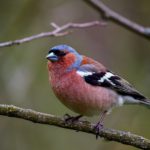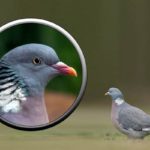Pigeons have become such a common sight on city streets that no one pays attention to the agile birds anymore. They scurry back and forth in parks, near markets, on embankments. They beg people walking for something edible and sit on their heads or shoulders without fear. However, as soon as the sun touches the horizon, the gray rascals disappear away, as if they never existed at all. Where do pigeons spend the night in the city and what time do they go to bed?
What time and where do pigeons fall asleep?
Like most birds, these feathered city dwellers begin to prepare for bed at sunset and wake up at sunrise. In different seasons, the time of rising and the number of hours of wakefulness differs. In summer, birds sleep less, in winter more, since the length of daylight hours is significantly reduced.
In nature, pigeons spend the night in different places - it depends on the species and habitat. The steppe pigeon rests in dense bushes and trees. The common blue-gray species originally nested in rocks, mountains, and sea coasts. Today it has almost completely moved to the cities. One way or another, with the approach of cold weather, all pigeons try to move closer to human habitation, where there is an opportunity to warm up and easily find food.
City birds prefer to build nests where food and food will be nearby, but the threat of human intervention is reduced to zero. These are attics, abandoned houses, construction sites, balconies within the city. The higher and more inaccessible the building, the better for the birds.
What is their sleep duration
The bird of the world is a diurnal bird, and therefore it is very difficult to spot it after sunset. Pigeons spend 8 to 10 hours a day sleeping. Of course, if necessary, birds can take a nap on a branch during the day.
When doves wake up
Birds wake up with the first rays of the sun, tidy up their plumage and go in search of food. Interestingly, in cloudy weather birds can sleep longer than usual, they are less active and more cautious.
If pigeons are placed in a cage and covered with an impenetrable black cloth, even in the middle of the day, the pigeons will immediately go to the side. So it’s still not completely clear what controls the sleep and wakefulness patterns of these creatures? Biorhythms or only visual perception of a light source.
Features of life in the city
Pigeons, like many other animals, quickly realized that living side by side with people has many advantages. This means shelter, warmth and affordable food. And although there are no natural enemies - predatory animals - in the city, another danger remains - man himself. How did pigeons learn to survive in an urban environment?
Birds have inhabited the human environment since ancient times. They began to nest long ago in high spiers, bell towers and attics. Today, pigeons try to gather in places where there are a lot of people: markets, parks, public transport stops.
Despite their apparent gullibility, these birds are not at all so simple. They allow people to get close, but in case of danger, they quickly retreat to the nearest roof.
Most people consider blue-winged tramps to be stupid, but this is far from the case. Experiments and many years of history have proven that these creatures build their hierarchy in a pack, and also recognize objects from a picture. A large group of pigeons in the park splits up and looks for food; when it is found, all members of the group flock to the feast.
When there is a shortage of food, birds do not hesitate to eat in landfills and rummage around in garbage bags. Because of this, they are considered almost the most unclean birds. This is not entirely true. But birds actually carry many dangerous diseases. Therefore, after interacting with them, you must wash your hands thoroughly.
















